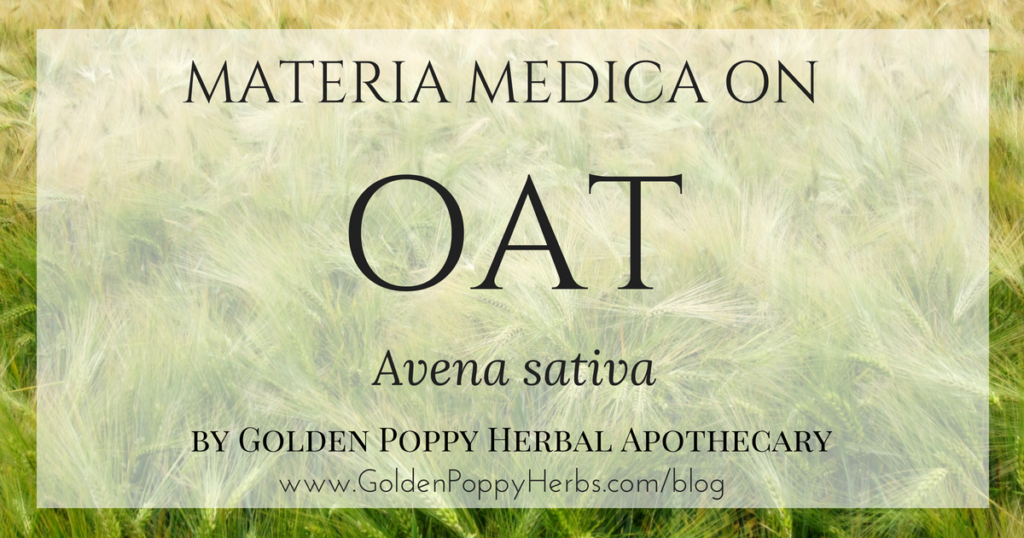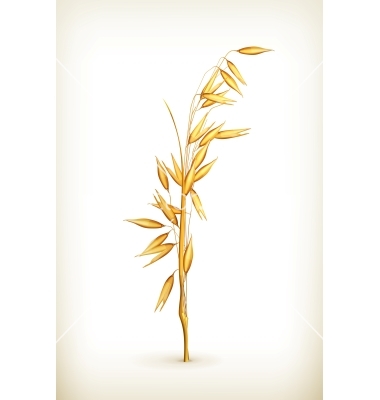
The cultivation of oats in the US and other industrialized countries is mainly for the purpose of livestock feed, but for humans it’s also produced as oatmeal, rolled oats or oat flour. The oat is a common grain and also known as a cereal grain. It is high in protein and is a staple food to the western diet.
WHAT’S NOT COMMONLY KNOWN IS THAT THE OAT PLANT ALSO HAS MANY MEDICINAL PROPERTIES AND CAN BE USED TO HELP WITH MANY DIFFERENT MENTAL AND PHYSICAL AILMENTS.
The wild oat originated from Western Europe as a weed. It became domesticated around 2500 b.c. as livestock feed for horses. The plant was brought over to America by Scottish Settlers and began to be wildly cultivated. It gained popularity for humans consumption after the civil war.
The oat plant grows best in a temperate climate. Regions such as northwestern Europe, upper midwestern United States and southern Canada are excellent climates for growing oats with their cool moist environments. The oat plant prefers full sun, rich soil and moderate amounts of water. The plant grows to be about 4 feet high and its leaves are long, broad and slightly hairy.


MATERIA MEDICA: OAT
Latin name: Avena sativa
Family: Poaceae (Grass Family)
Parts Used: Seed (milky stage), Stem (also known as oatstraw)
TCM Name: Yen-mai
Taste: Slightly sweet, Refreshing
Energetics: Cooling, Moistening, Sweet
Key Constituents: Silica, magnesium, phosphorus, chromium, iron, calcium, alkaloids, protein, the vitamin B complex, and vitamins A, C, E, and K, glycosides, flavones, polysaccharides, alkaloids, proteins, saponins (Holmes, 1997; Berger, 1998; Edwards, 2000).
Geographic Distribution: Cultivated and wild in temperate regions throughout the world
Botanical Description: Oat grows to four feet tall with narrow, lance-shaped, flat, rough green leaves on a smooth stem. The flower consists of two-flowered spikelets that hang downward and develop into two husk-wrapped grains.
Harvesting Guidelines: Milky oats are the oat grains harvested when they are in their milky stage, during which the oat grains release a white, milky sap when squeezed. This stage, which lasts approximately one week, occurs after the oat begins flowering and before the seed hardens and becomes the oat grain we eat as oatmeal. Oatstraw is the name given to the stem of the oat plant harvested during the milky oat stage when it is still green.
Actions: Alterative, antidepressant, antispasmodic, aphrodisiac, blood tonic, brain tonic, chi tonic, demulcent, diaphoretic, diuretic, emollient, endocrine tonic, febrifuge, laxative, mood elevator, nervine, nervous system tonic, nutritive, rejuvenative, reproductive tonic, restorative.
Preparation and Dosage:
- Tea– Use 1 tablespoon to 1 cup of boiling water. Let steep for 10-20 minutes and enjoy!
- Tincture– Take 2 ml of oatstaw tincture by mouth 1-4 times daily.
- Skin wash– For irritated skin make a tea steep for the bath. Use a tea bag, strainer, or let the herbs free float, soak and enjoy!
Uses*:
The oat helps to nourish the skin, nails, teeth and hair, relaxes the nerves, strengthens the nervous system, supports elasticity in blood vessels and lowers cholesterol.
The seed and stem, also known as oatstaw, help to treat addiction, anxiety, add, bone cancer, broken bones, colds, constipation, convalescence, conclusions, Crohn’s disease, debility, erectile dysfunction, exhaustion, gout, headache, hemorrhoids, incontinence, infertility, insomnia, low libido, lupus, menopause systems, multiple sclerosis, nervous breakdown, nervousness, osteoporosis, paralysis, post-traumatic stress disorder, rheumatism, rickets, schizophrenia, shingles, stress, ulcers, varicose veins and withdrawal symptoms (from Tobacco, drugs or Alcohol).
Cautions:
If you are allergic to gluten, the oat plant is often cross-contaminated with it in the field or while it is being processed. A gluten allergy can cause symptoms such as bloating, constipation, diarrhea, headaches, bone or joint pain, ADHD behavior, foggy mind, and chronic Fatigue.
OUR PRODUCTS CONTAINING OAT-STRAW:
If you’re interested in starting to utilize this wonderful herb, the following are some of the products we regularly make in our store that contain oat-straw:
- Knit Bone Tea – for sprains, strains, breaks, and more
- Adaptitea – adrenal support for the masses
- De-Stress Tea – support and re-set your system
- Daily Tea – everyday nourishment and support
- Nursing Tea – helps support breast milk production
SOURCES:
- Mars, Brigitte A.H.G. “Oat.” The Desktop Guide to Herbal Medicine. Laguna Beach: Basic Health, 2007. N. pag. Print.
- The Herbarium’s Oat Monograph: https://herbarium.theherbalacademy.com/monographs/?ap_id=goldenpoppy#/monograph/2032
- https://en.wikipedia.org/wiki/Oat
- http://www.encyclopedia.com/topic/oats.aspx
- http://www.susunweed.com/herbal_ezine/April06/grandmother.htm
- http://healthyeating.sfgate.com/health-benefits-oat-straw-tea-9852.html
- http://celiac.org/celiac-disease/non-celiac-gluten-sensitivity/


